How did scientists try to teach primates to talk?
It has long been known that speech is not only a tool of human intelligence, but also an integral part of the process of its formation. Therefore, it is not at all surprising that scientists, who have been trying to “humanize” animals for a long time, first of all try to teach them to speak. Nothing has changed even now, with the only difference being that unsuccessful attempts to get horses and cats to talk have been abandoned, and all efforts are being put into the most promising of our smaller brothers - primates.

Since ancient times, attempts to teach monkeys human speech have been made repeatedly, but without success. Primates mastered cutlery, got used to clothing, and even acquired bad habits such as smoking and drinking, but they flatly refused to speak.
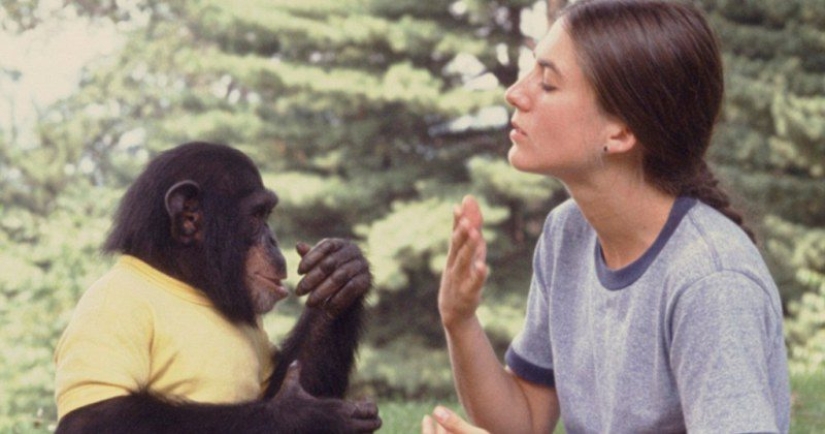
The first successes were achieved only in 1916. The Englishman William Furness was able to teach an orangutan to more or less clearly pronounce the words “daddy” and “cup”. This took a lot of effort and time, but the time was not wasted. In the process of a lengthy experiment, the scientist found that monkeys make sounds without resorting to the help of their tongue and lips. This complicated the work, but brought some clarity to it.
In the mid-20th century, psychologists Keith and Catherine Hayes compared the logical abilities of a chimpanzee named Vicki and several human children. To their surprise, the scientists saw that the difference in intelligence was not too big. During the experiment, Viki even managed to learn four words, although with great difficulty.
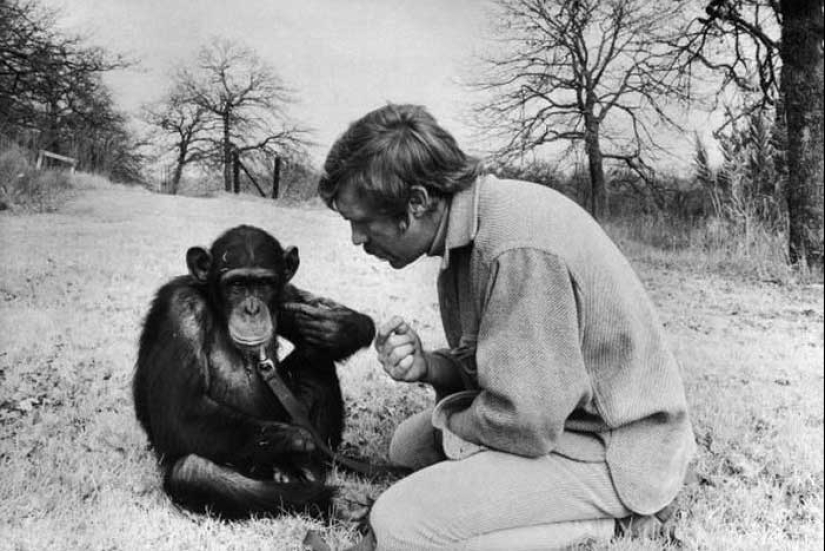
Chimpanzee Washoe "communicates" with Allen Gardner
Keith and Catherine's work came in handy 10 years later. Another married couple of psychologists, Allen and Beatrice Gardner, watching filmed sessions with the chimpanzee Vicky, noticed that all the words that the monkey tries to pronounce, she reinforces with specific gestures. The movements of the animal's paws and head were so expressive that even without sound it was clear what it wanted to say.
Thus, the Gardners came to the conclusion that the linguistic abilities of monkeys are best studied based on gestures and facial expressions. To test their hunch, the couple acquired a female chimpanzee named Washoe and began teaching her the sign language Amslen, which is used by deaf and mute people in the United States and Canada.
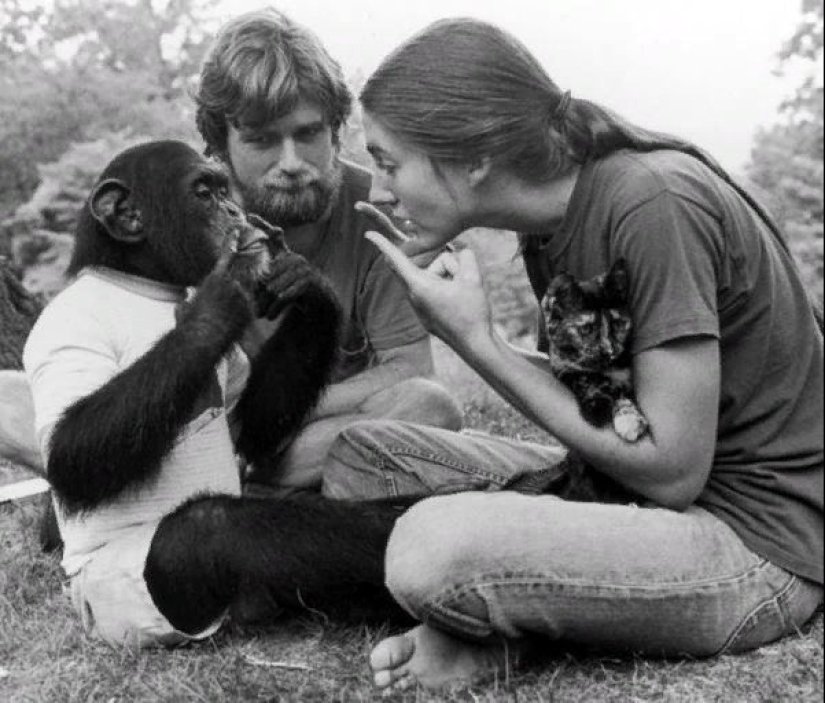
Allen and Beatrice are training Washoe
Special, most favorable conditions were created for the animal - Washoe lived not in an enclosure, but in the Gardner family, as a child. According to psychologists, this approach helped the animal better adapt to communicating with people and quickly assimilate the material.
During the training process, Washoe was shown an object and then made a gesture with her fingers to represent it. This is how the associative connection was consolidated in the animal’s consciousness. Over time, the chimpanzee learned to combine gestures to form simple phrases. Three years of hard work allowed the animal to be taught 85 words, and after another two years Washoe already knew 160 words.
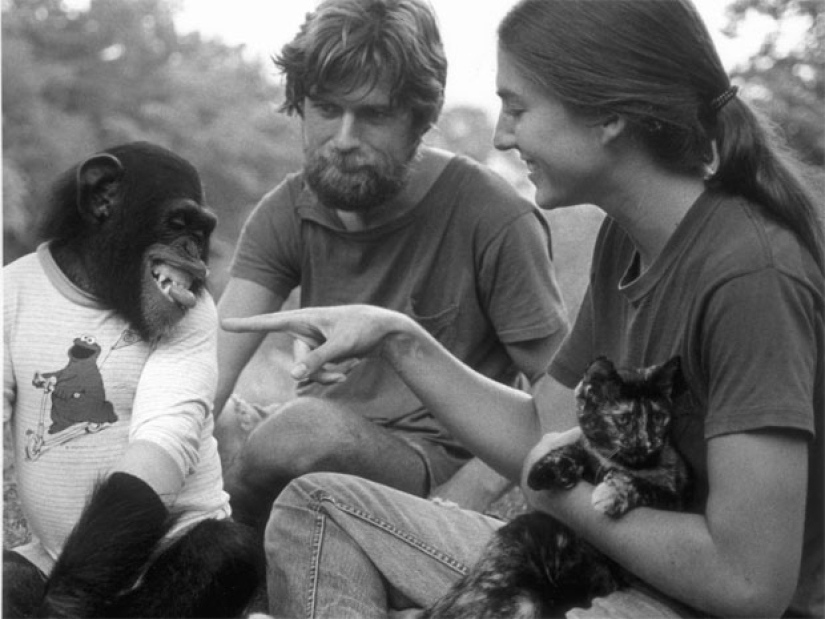
The Gardners noticed an interesting feature: the monkey gave some objects names that he himself had invented. They consisted of two parts, one of which denoted a thing or being, and the other - some important property of it. In Washoe language, a refrigerator was called a “cold box,” a watermelon was a “drink-candy,” and a swan was a “water bird.”
But most of all, scientists were struck by Washoe’s ability to swear - once, to express his extreme disapproval, the animal used the word “dirty,” although no one taught him to use it in this sense. So psychologists have determined that apes are capable of abstract thinking, or rather, they master metaphors and can use words in a figurative sense.

Chimpanzee bonobo
By the early 1970s, there were a dozen sign language-speaking chimpanzees in the world. Moreover, it turned out that some other primates also possess symbolic thinking, for example, bonobos and gorillas. Bonobos turned out to be the smartest in this regard. Scientists know of a case where a female trained in sign language, on her own initiative, took up the task of educating her cub and successfully taught him several simple gestures.
This interesting case forced scientists to take a particularly close look at bonobos. Soon, many scientists were convinced that it was these small chimpanzees that were closest to humans in terms of intelligence.

Unusual research, which fascinated zoologists, psychologists and linguists in different parts of the world, could not help but generate a wave of criticism from skeptical colleagues. The main argument in the debate was that the monkeys demonstrated only those gestures that they had already seen performed by people, that is, they simply imitated.
In his book “When the Gorilla Spoke,” science journalist Boris Zhukov wrote the following:

In parallel with the Gardners, another scientist, David Premack, conducted research in this direction. His ward was the chimpanzee Sarah, whom he taught a special technique for transmitting information using abstract figures, each of which denoted an object, its property or action. To communicate with Sarah, Premack developed a special language that allowed him to communicate through the display of symbols.
Everything happened very simply - in order to tell David something, Sarah found the corresponding figure in the box and hung it on a magnetic board. Premack's method had an important advantage - it could not be criticized in the standard way. Typically, skeptics argued that the monkey folds its fingers as it pleases, and scientists interpret this gesture as they need.
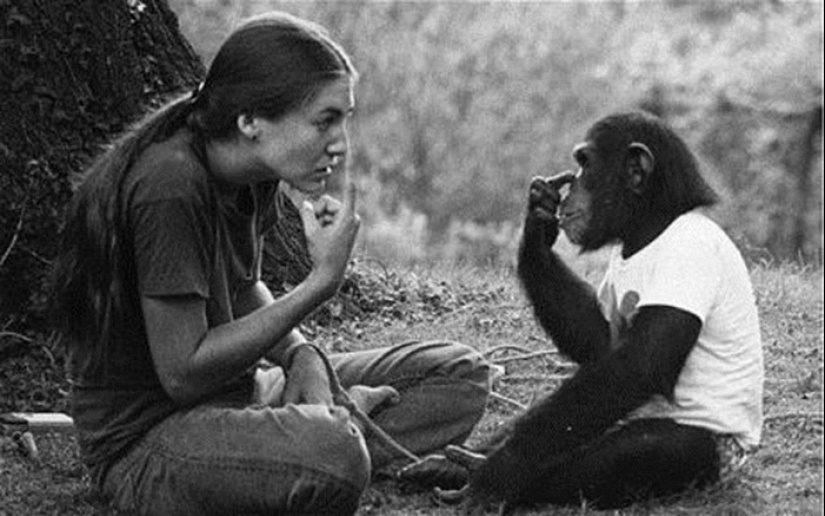
In the case of Sarah, the experimenter could not be accused of an unscientific approach, since the animal confidently extracted from the set a figure with a clearly assigned meaning. David Premack's work with Sarah has convinced many that the monkey uses learned meanings quite consciously.
Ten years later, already in the 80s, Premack’s promising method was finalized. This allowed a young male bonobo named Kanzi to learn 600 words! Interestingly, his mother was completely incapable of learning to speak and Kanzi, as well as his sister, worked as translators, explaining to her the meaning of words.
But, despite all the successes, one should not have any special illusions about monkeys. It is already known for sure that their intellectual development occurs in the first years of life and they are left with what they have learned during this time. As a rule, they are close in level to two- and three-year-old children and it is no longer possible to achieve further progress in learning.
It must be remembered that the pronunciation of words is beyond the control of either monkeys or other mammals. This requires subtle movements of the lips and tongue, as well as serious breathing control. At the same time, the brain of apes turned out to be quite developed in those areas that are responsible for speech. In this regard, one can only wonder why evolution did not contribute to the emergence of speech skills in monkeys.
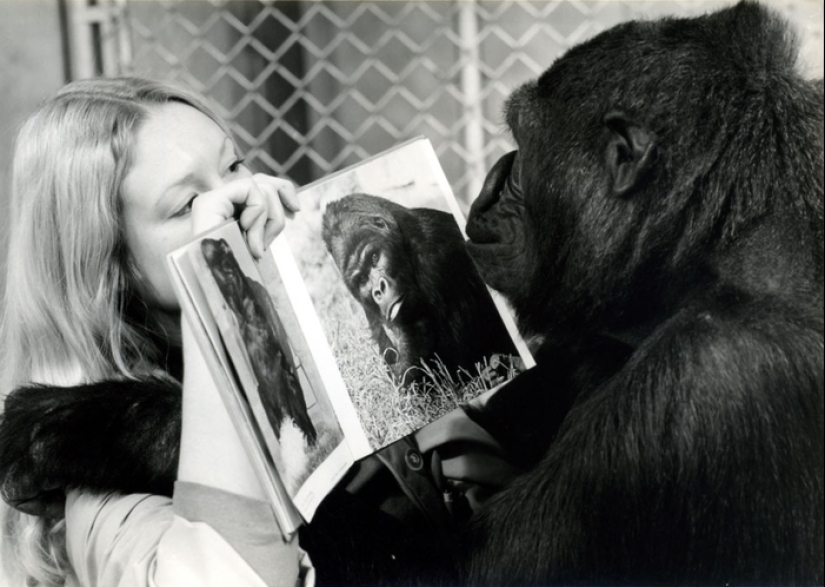
Finally, we need to remind you of an interesting and strange case. One of the monkeys participating in the speech learning experiment said about the deceased kitten: “He went to a place from which they do not return.” Don't you think that monkeys are much smarter than they seem and know things that no human is yet aware of?
It is very rare that other animals, such as dogs, can be taught to express themselves in a primitive way. But in this case we are talking more about developing reflexes at the level of circus tricks than about conscious speech.
Recent articles

Victor Lustig is considered one of the most skillful and famous scammers in the world. He was arrested about 50 times and released ...

A small apartment is not a sentence! On the contrary, this is an occasion to turn on imagination and come up with ways to stylishly ...

Each of us has heard at least once that "breakfast is the most important meal of the day." Spreading this truth is the work of ...